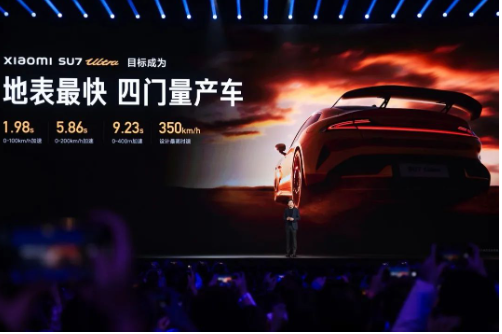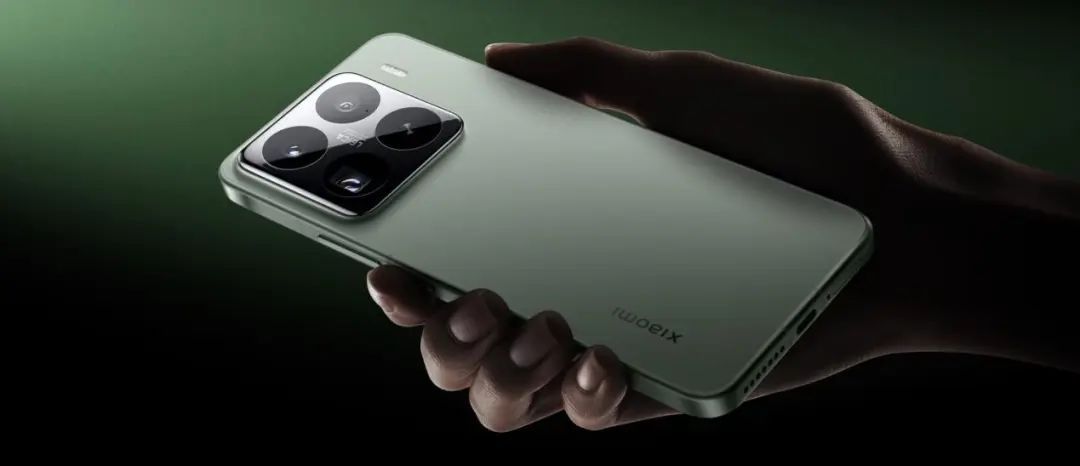Can Xiaomi really be unaffordable?
![]() 11/14 2024
11/14 2024
![]() 335
335

Edited by Ji Ran
Xiaomi is shedding its cost-effective label and becoming increasingly expensive.
On October 29, Xiaomi held a new product launch event, with the pre-sale price of the newly launched Xiaomi SU7 Ultra reaching 814,900 yuan, while the previously launched Xiaomi SU7 standard version was priced at 219,000 yuan. At the same time, the starting price of the newly launched Xiaomi 15 is 4,499 yuan. Compared to the previous Xiaomi 14's starting price of 3,999 yuan, the price increase is about 500 yuan.
Lei Jun once joked that Xiaomi fans should cherish the Xiaomi flagship phones starting at 3,999 yuan, as such prices would not be available in the future. Many Xiaomi fans joked, "We're just getting older, not richer."
In the past, "cost-effectiveness" has been the soul of Xiaomi. However, in recent years, Xiaomi has begun to move towards high-end products, with prices of both mobile phones and cars rising, gradually becoming unaffordable for young people.
So, why is Xiaomi pursuing high-end products? What gives it the right to do so? And what difficulties will it encounter on this path?
01
Xiaomi, Out of Reach
The most notable products from Xiaomi's recent new product launch event were the Xiaomi SU7 Ultra and Xiaomi 15.
During his speech, Lei Jun laid the groundwork for the announcement of the final price of the Xiaomi SU7 Ultra.
He first evaluated the car as the most high-end and powerful model in the Xiaomi SU7 series, being the fastest four-door mass-produced car on the ground.
Indeed, the Xiaomi SU7 Ultra boasts a maximum horsepower of 1,548 PS, a 0-100 km/h acceleration time of only 1.98 seconds, and a top speed of 350 km/h. These specifications are very eye-catching.

Lei Jun then emphasized that the Xiaomi SU7 Ultra would not be cheap, but rather somewhat expensive, comparing it to the Porsche Taycan Turbo GT and stating that it is "comprehensively superior."
When the price was finally announced, there was only sparse applause from the audience, creating an awkward scene. The excited cheers that greeted the announcement of the Xiaomi phone 1's 1,999 yuan price were no longer heard.
Some netizens joked, "Now that Porsche's price has fallen below 400,000 yuan, if you can't afford the Xiaomi SU7 Ultra, you can buy a Porsche as a transition." "Once ignored Xiaomi, now it's out of reach."
A considerable number of people are also questioning whether Xiaomi has lost its way.
Lei Jun had anticipated these questions. At the launch event, he said that his genuine concern was whether Xiaomi's meticulously prepared products were "worth the price and whether they truly exceeded the expectations of those who wanted them."
Whether or not they are worth it will only be known after the cars are delivered and truly experienced.
Besides cars, Xiaomi's mobile phones are also becoming increasingly high-end. At this launch event, Lei Jun said, "Xiaomi's high-end strategy has been implemented for five years, with five generations of products released. The Xiaomi 15 launched today will be the smoothest, most exquisite, and best-feeling small-screen flagship ever."
In this digital series launch, the Xiaomi 15 is priced starting at 4,499 yuan, and the Xiaomi 15 Pro starts at 5,299 yuan. Most statistical agencies define models priced above 600 USD (approximately 4,281 yuan) as high-end. This means that all Xiaomi digital flagship phones have crossed the threshold into high-end status.

Mumu (pseudonym) is a die-hard Xiaomi fan who has supported Xiaomi since the first generation. In the past two years, Mumu has noticed that Xiaomi products are becoming increasingly expensive. He is somewhat puzzled, isn't Xiaomi supposed to be about high cost-effectiveness? Is selling at such high prices straying further from its original intentions?
In fact, Xiaomi's high-end strategy began as early as 2020. That year, the Xiaomi 10 series made its first foray into the high-end market. In 2022, Xiaomi officially established high-end positioning as a group strategy, proposing to comprehensively benchmark Apple. In last year's personal speech, Lei Jun even stated that "Xiaomi's path to high-end is inevitable and a matter of survival."
From the data, in the first quarter of 2024, Xiaomi's shipments of high-end smartphones accounted for 21.7% of its overall smartphone shipments, an increase of 1.4 percentage points year-on-year. According to Canalys data, Xiaomi's market share in the global high-end market was 2% in the second quarter of 2024, a year-on-year increase of 71%.
This means that Xiaomi is moving faster and faster on the path to high-end products. This is something to celebrate. However, it is also moving further away from its cost-effective label.
So, why is Xiaomi determined to pursue high-end products despite the risk of being questioned or even abandoned by a large number of fans?
0
Why Pursue the High-End Path?
Every enterprise is like a ship sailing in the tide of the industry. As the tide turns, the enterprise must also change course.
One of the main reasons Xiaomi is determined to pursue high-end products is that it is becoming increasingly difficult to tap into new market growth.
Since 2017, as smartphone penetration rates have peaked, most consumers are no longer eager to upgrade their phones, and market growth has dwindled. In 2022, smartphone shipments in China fell 13.2% year-on-year, marking the largest decline on record at the time.
Despite the slowdown, the high-end smartphone market has continued to grow. In 2022, sales in the high-end smartphone market increased by 1% against the trend, contributing more than 55% of global smartphone market revenue for the first time.
It was in this year that Xiaomi elevated its high-end strategy to a group-level strategy. For Xiaomi, continuing on the cost-effective path would lead to increasingly slim profits, undoubtedly pushing it into a dead end.
Additionally, consumers have grown tired of the selling points of mid-to-low-end phones, and Xiaomi must








